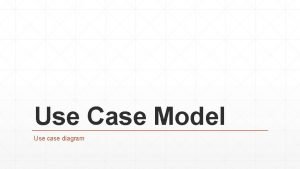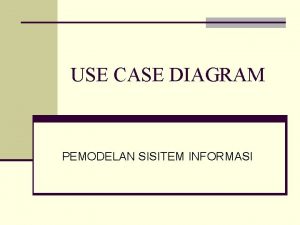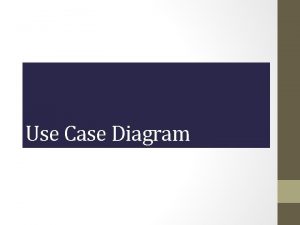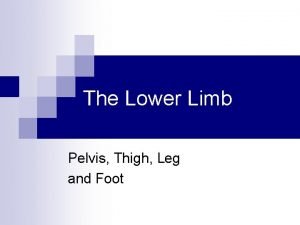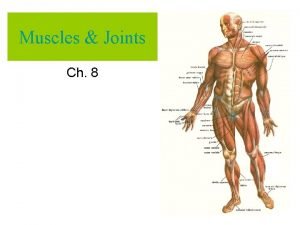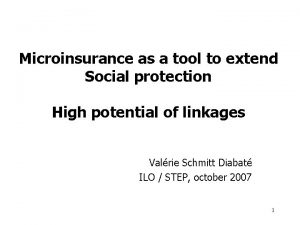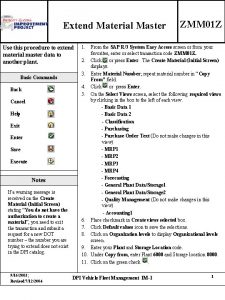Microinsurance as a tool to extend Social protection











- Slides: 11

Microinsurance as a tool to extend Social protection Development, diversity & key issues Valérie Schmitt Diabaté ILO / STEP, october 2007 1

Access to social protection coverage (notably in health) is a priority • Human right to social security & access to health • Poverty alleviation • Positive impact on performance and productivity • Fight against epidemics • Enhance efficient management of health • Reinforce social cohesion, promote democracy 2

Universal coverage is not a reality but strong international mobilization • The social protection coverage is still weak (only 5 to 10 % covered in sub Saharan Africa); increasing informalization of work • A consensus: – ILC 2001, Global campaign 2003 – Several international conferences and initiatives (see Elodie’s presentation) 3

In the developping and middle income countries, many initiatives to extend SP • A variety of mechanisms are possible – Social insurance – Universal systems offering free access to services without conditions on resources – Social assistance targeted to vulnerable populations – Private insurance – Health mutual organizations and microinsurance • Each mechanism has advantages and disadvantages, no single mechanism can provide an adequate response • They are complementary (should not be in opposition), tendency at the country level to capitalize on this – It is now accepted that microinsurance represents a necessary dimension 4

Microinsurance as a Social protection mechanism – Purpose & principles At an affordable cost, including for the poorest subsidies, redistribution Access to an existing service • Provide excluded people with access to an essential package of social protection 9 contingencies Efficiency Responding to the priority coverage needs 5

Development of microinsurance • Results of The Landscape of Microinsurance in the World's 100 Poorest Countries (2006) – 78 million lives covered by Microinsurance in the World's 100 Poorest Countries – Prediction: at least 10% growth in 2007 and 100% growth over five years • ILO / STEP Inventories – Results of the 2003/2004 inventory – Permanent inventory starting in 2007 • Africa : www. conceration. org • Coming soon on AMIN website 6

Development of microinsurance Results of inventory (2003 -04) 7

Development of microinsurance Results of inventory (2003 -04) Weak in % of the total population 8

Diversity of microinsurance • Benefit package (Life, health …) and within health (hospitalization, OPC, maternity, …) ; levels of benefits • Several organization models – Various responsible organizations (HC structure, community, cooperative, trade union, MFI, etc. ) – Community based schemes, mutual health organizations (in house management, no subsidies), stand alone or belonging to a network of schemes – Linked schemes: Outsourcing of management and agreements with HC providers (TPAs) or insurance function (P-A model), Subsidies, Etc. • ILO / STEP Inventories – Identification of types of schemes with common characteristics 9

Diversity of microinsurance Principal Component Analysis (PCA) Mali Benin, Burkina, Tchad, Togo, Cameroon, Ivory Coast • Small number of offered packages • Capitation • Annual contributions • RO: Health care provider Nepal The Philippines • Differences in contributions (linked to revenue) • No membership conditions India • Small number of beneficiaries • Organisations in starting-up or problematical phase Senegal • High number of offered packages • Non formal responsible organisation • Medium size (number of beneficiaries) • Target group: the poor • Membership: non voluntary • High number of beneficiaries 10

Key common issues • The trade off between financial protection and affordability of premium / necessity of additional source of fundings • The question of flat rate premiums / equity • The challenge of the extension towards universal coverage • The question of technical performance, management, monitoring … • The relationship with health care sector • Others? 11
 Ad rms bulk protection tool
Ad rms bulk protection tool Apa itu social thinking
Apa itu social thinking Social thinking social influence social relations
Social thinking social influence social relations Pengertian include dan extend
Pengertian include dan extend Use case
Use case Apa itu include dan extend
Apa itu include dan extend Use case with multiple actors
Use case with multiple actors Extend thigh
Extend thigh Airport check-in and security screening uml diagrams
Airport check-in and security screening uml diagrams Interface oop
Interface oop Synarthroidal
Synarthroidal Extend vs append python
Extend vs append python



